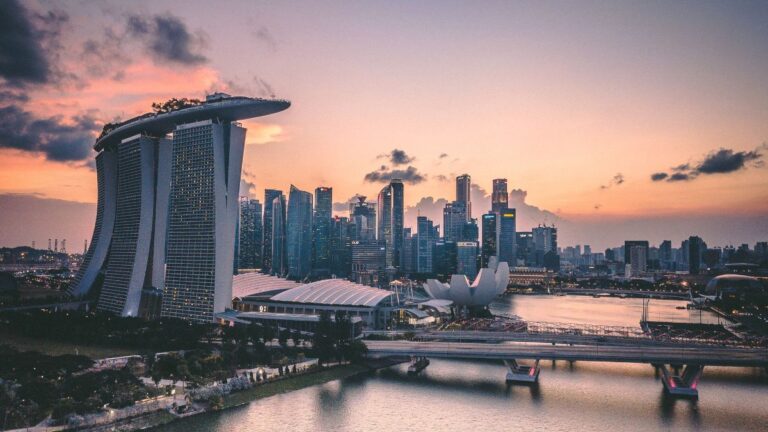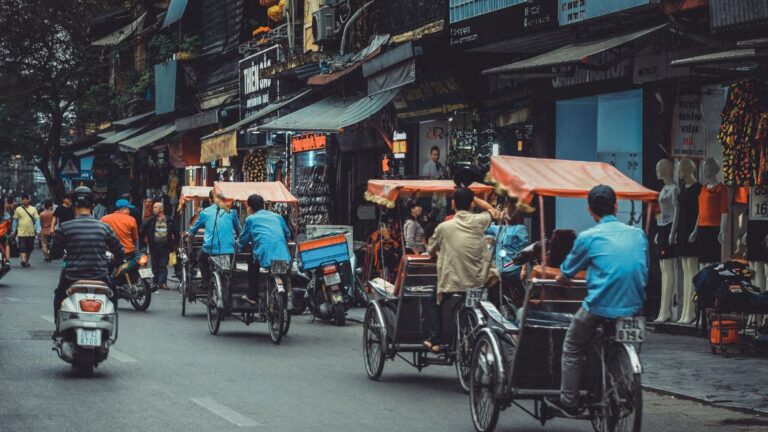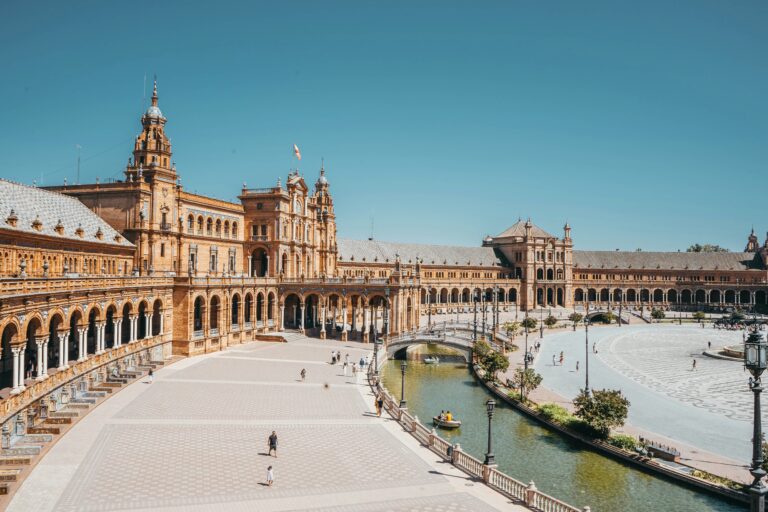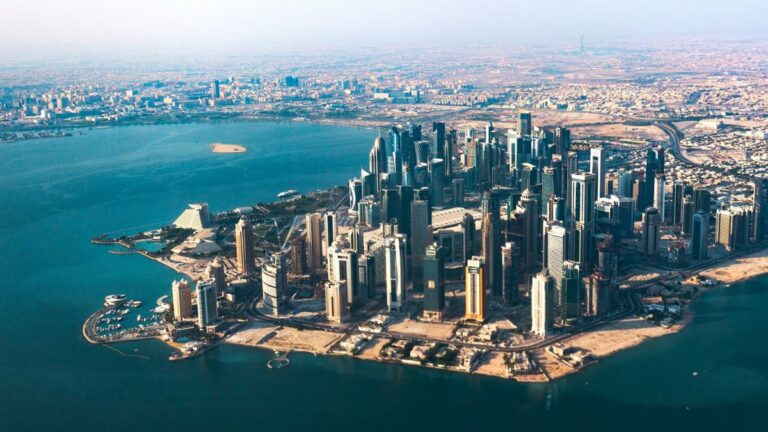The Ultimate Travel Resources Guide: Visas, Insurance, Currency Exchange and More
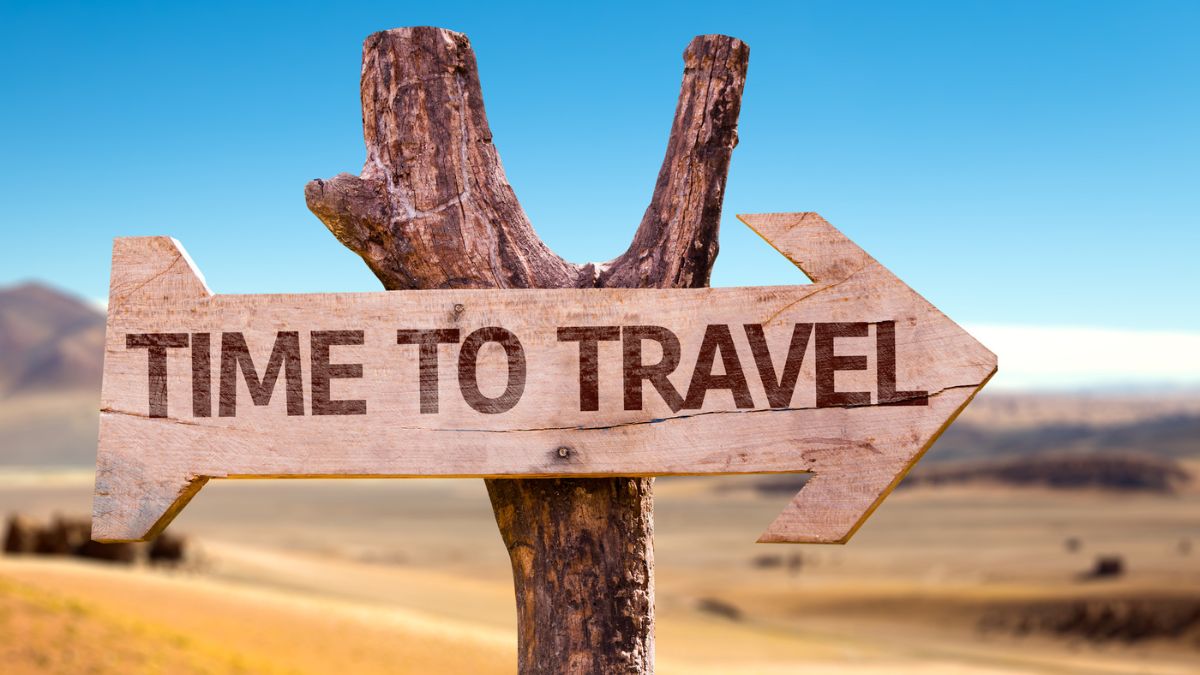
As participants in Amazon Associates and other programs, we earn from qualifying purchases. This comes at no additional cost to you. For more details, see our Affiliate Disclosure.
Traveling the world is an exhilarating adventure, but navigating the logistical intricacies can be less than thrilling. Whether you’re a seasoned globetrotter or planning your first big journey, being equipped with the right resources can make all the difference. From obtaining visas and securing travel insurance to managing your finances on the go, our Ultimate Travel Resources Guide is here to simplify the process, ensuring you focus more on the destination and less on the details.
The Visa Vortex: Understanding Types, Requirements, and Application Processes
Venturing into the realm of visas can feel like diving into a whirlwind of documents, regulations, and ever-changing rules. However, a clear understanding of the types, requirements, and application processes can help dispel the confusion, guiding you through the “visa vortex” with ease. In this section, we’ll unravel the complexities of visas, offering travelers clarity and confidence as they prepare for their journeys.
Types of Visas
Not all visas are created equal. Depending on the purpose of your visit, there are different visa categories to consider.
Tourist Visas
Tourist visas are specifically designed for those individuals aiming to explore a country for leisure, recreational, and holiday reasons. It’s the most common visa travelers apply for. With this visa, individuals can immerse themselves in a country’s culture, visit landmarks, and enjoy a vacation.
However, they’re typically not allowed to engage in employment or long-term study. The duration of a tourist visa varies widely from country to country but is usually for a short-term period, often ranging from a few days to a few months.
Business Visas
When professionals need to attend meetings, seminars, conferences, or any business-related events in a foreign nation, they apply for a business visa. This type of visa ensures that the individual is in the country purely for business reasons and not seeking employment or permanent residence.
While its duration can sometimes overlap with that of a tourist visa, the documentation and scrutiny involved are often more rigorous, as it must often prove the legitimacy of the business purpose and affiliations with hosting institutions or companies.
Student Visas
Intended for individuals aiming to undertake an academic course in a foreign country, the student visa is a gateway to international education. This visa allows students to live in the host country for the duration of their study, be it a short course or a full-degree program.
The process for obtaining a student visa can be intricate, often requiring proof of admission from the institution, evidence of financial stability to cover the course and living expenses, and sometimes even health and character assessments.
Work Visas
Work visas cater to individuals who have secured employment in a foreign land. They are the bridge that allows professionals to contribute their skills and expertise to a workforce outside their home country.
The duration and requirements of work visas can be complex, often tying directly to the terms of employment, and may require periodic renewals. They also often come with certain restrictions and conditions, ensuring that the visa holder is contributing positively to the host country’s economy and society.
Transit Visas
For travelers who are just passing through a country en route to their final destination, transit visas come into play. These visas are typically short-lived, ranging from a few hours to a few days. Their main purpose is to ensure that a traveler can legally make a stopover in a country without officially entering it for an extended stay.
It’s essential for travelers to check if their layover country requires a transit visa, as the regulations can vary significantly depending on nationality and the specific country of transit.
Family and Spouse Visas
Reuniting with family in a foreign country often necessitates a family or spouse visa. This visa type serves those wishing to join family members, be it a spouse, parent, child, or other relatives, in a foreign nation where they have permanent residency or citizenship.
The scrutiny for family visas can be intensive, as authorities want to ensure the legitimacy of relationships and prevent potential immigration fraud. The duration of such visas can vary, with some leading to permanent residency options after a certain period.
Requirements
Each country and visa type comes with its own set of prerequisites. Common requirements often include.
Valid Passport
A primary requirement for any international travel, a valid passport acts as your primary identification. Most countries require that a passport be valid for at least six months beyond the date of entry.
It’s also essential to have blank pages, as some countries need a whole blank page for their visa stamp. Travelers must ensure their passport is in good condition; wear and tear or damage can lead to complications or refusal of entry.
Proof of Funds
To ensure that travelers can sustain themselves during their stay, countries often request proof of financial stability. This could be in the form of recent bank statements, pay slips, or a letter from the traveler’s bank.
The primary concern is to ensure that the traveler won’t become a financial burden on the host country or seek unauthorized employment.
Return or Onward Flight Tickets
An exit strategy is vital. Immigration officials want to know that travelers have intentions to leave the country after their visa expires.
Hence, proof of a return ticket or an onward ticket to another destination is often mandatory. It assures the country that the traveler has a planned departure.
Accommodation Bookings
Whether it’s a hotel reservation, Airbnb booking, or an invitation letter from a host, countries want to know where travelers plan to stay. It helps immigration authorities track and manage their foreign visitors better.
In cases where one is visiting family or friends, a formal invitation, along with a copy of the host’s identification, might be required.
Health Checks or Vaccinations
Some countries, especially those where certain diseases are prevalent, require travelers to undergo specific health checks or vaccinations before arrival.
For instance, Yellow Fever vaccinations are mandatory for travelers from or passing through certain tropical regions. It’s vital to carry an international vaccination record or card as proof during travel.
Travel Insurance
While not always compulsory, several countries have made travel insurance a requisite for visa approval, especially in the Schengen region.
Insurance not only protects travelers from unforeseen medical costs but also ensures that the host country isn’t burdened with unexpected healthcare expenses.
Completed Visa Application Form
Every visa process starts with an application form. This document, often available online, requires travelers to fill in personal, professional, and travel-related details.
It’s the first point of information for the host country to assess the reason and legitimacy of the visit.
Passport-sized Photos
Physical identification beyond the passport is also usually necessary. The specifications for these photos—size, background color, and photo pose—can vary by country, so it’s crucial to follow the guidelines strictly.
Character and Legal Assessments
Some countries might ask for police clearance certificates or other documents that certify the traveler doesn’t have a criminal record.
It’s a measure to ensure that the individual entering the country hasn’t been involved in severe legal misdemeanors in their home country or elsewhere.
Application Process
Navigating the application procedures can be intimidating, but being prepared is half the battle. Here are the general steps.
Research
Before embarking on the application journey, it’s paramount to conduct thorough research. Every country has its own set of visa rules, procedures, and requirements. Official embassy or consulate websites offer the most accurate and updated information.
Additionally, many countries have bilateral or special agreements that could provide privileges, such as visa-free entry or visa-on-arrival, for citizens of specific nations. Therefore, understanding your eligibility and the type of visa you need is the first step in a successful application.
Preparation of Documents
Once you’ve ascertained the visa type and requirements, the next step is to gather all necessary documents.
This typically includes a valid passport, the completed visa application form, recent passport-sized photos adhering to the specified dimensions, proof of funds, flight bookings, accommodation reservations, and any other specific documents as per the visa type, such as invitation letters or health certifications.
It’s crucial to ensure that all documents are genuine and up-to-date to avoid rejection.
Submission
The mode of submission varies. Some countries have adopted online visa application systems, allowing applicants to upload scanned copies of their documents.
Others may require a physical submission, either by post or in person at the designated embassy, consulate, or visa application center. Always follow the guidelines provided to ensure your application reaches the right hands.
Payment of Fees
Visa applications almost always come with a fee. The amount can vary based on the visa type, duration, and nationality of the applicant.
Modes of payment differ – some can be paid online via credit or debit cards, while others might need a bank transfer or payment in person. It’s essential to keep a receipt or proof of this transaction, as it may be required later in the process.
Attend an Interview
Many countries, especially for longer-duration visas or those with the potential to lead to residency, require applicants to attend an in-person interview at the embassy or consulate.
This step allows officials to verify the authenticity of the application and assess the applicant’s intentions. It’s vital to be punctual, dress appropriately, and carry all original documents to this appointment.
Wait for Processing
Visa processing times can vary significantly. Some visas, like transit or short-term tourist visas, might only take a few days, while others, such as work or student visas, could take weeks or even months.
During this period, embassies might reach out for additional information or clarification on certain documents. It’s essential to respond promptly and provide any additional details as required.
Receive the Outcome
Once processed, applicants will be informed of the decision. Approved visas might be stamped directly into the passport, provided as an electronic authorization, or given as a separate document to accompany the passport.
In cases of rejection, some countries offer an explanation or an avenue for appeal. It’s crucial to understand the terms of your visa, such as the validity period and any conditions or restrictions.
Travel Insurance 101: Why It’s Vital and How to Choose the Right One
Travel insurance isn’t just another tick on your travel checklist—it’s a safeguard against the unpredictable. Whether it’s a canceled flight, a lost bag, or an unexpected medical emergency, having the right coverage ensures that unexpected events don’t turn into costly nightmares.
Why Travel Insurance is Essential
Unforeseen Medical Expenses
When we step out of our homes, there’s always a sliver of uncertainty. A slip, a fall, or a sudden illness can land you in a foreign hospital. Especially in countries where medical care for tourists is exorbitant, travel insurance becomes a shield.
It ensures that you’re not left with hefty medical bills, covering everything from doctor consultations to potential medical evacuations.
Trip Interruptions and Cancellations
Life is unpredictable. Flights might get canceled due to unforeseen circumstances, or perhaps there’s a sudden family emergency that needs you back home.
With travel insurance in place, these interruptions don’t need to burn a hole in your pocket. It aids in recuperating the costs of unexpected changes or cancellations.
Lost or Damaged Luggage
Imagine reaching your dream destination, but your luggage decided to head elsewhere. While airlines often compensate, it might not cover the full value or immediate needs.
Insurance acts as a cushion, allowing you to purchase necessities while your baggage plays catch-up or compensating if it’s lost forever.
Protection Against Theft
While exploring new territories is exhilarating, it’s also a venture into the unknown. If you happen to be at the wrong place at the wrong time, theft or robbery can dampen the spirit.
Insurance serves as a safety net, ensuring that you’re not left stranded without essentials or funds.
Deciphering the Types of Travel Insurance
Single Trip Insurance
One journey, one insurance. If you’re someone who travels occasionally, single trip insurance might be your best bet. It covers you for the entirety of one specific journey, from the moment you leave home till your return.
Multi-Trip or Annual Insurance:
For those bitten by the travel bug, this insurance is a boon. Instead of insuring every trip separately, this policy has you covered for multiple voyages within a calendar year. Remember, though, there’s usually a cap on the number of days covered per trip.
Medical-Only Insurance
While the thrill of adventure calls many, it’s essential to prioritize health. Medical-only policies center solely on health-related mishaps, ensuring that any sudden medical requirement doesn’t become a financial burden.
Comprehensive Insurance
Traveling with a safety net below and a parachute above, this policy is the ultimate protection. Comprehensive insurance doesn’t just cover medical emergencies; it extends to trip cancellations, baggage issues, and myriad other potential challenges.
Specialized Policies
Not all journeys are the same. Maybe you’re off to conquer the highest peaks, or perhaps it’s a serene cruise on your mind. Specialized policies cater to unique trips, ensuring you’re covered for specific activities like adventure sports or unique travel methods like cruises.
Choosing the Right Policy
Evaluate Your Needs
Your trip is as unique as you. Reflect on what you’ll be doing. A backpacking trip across Europe will have different needs than a business trip to Tokyo. Ensure your policy mirrors your travel style.
Read the Fine Print
The devil is in the details. Before signing up, know what your policy covers and the exclusions. The last thing you want is to assume coverage for something that’s not included.
Consider the Destination
Every destination has its own set of challenges. From high medical costs in the US to potential theft hotspots in crowded tourist areas, ensure your policy is tailor-made for your destination.
Check for Overlaps
Why pay twice for the same benefit? Some benefits might already be covered by your credit card company or existing policies. Before purchasing, check for any overlaps to avoid redundancy.
Mastering Currency Exchange: Tips for Getting the Best Rates
Navigating the world of currency exchange can be a daunting task, especially with fluctuating rates and multiple avenues to change your money. However, with the right knowledge and tactics, you can ensure that you get the most value for your money. Here are some vital tips and insights to guide you in mastering currency exchange and securing the best rates.
- Understanding Exchange Rates:
Exchange rates are influenced by various factors like market demand, geopolitical events, and a country’s economic performance. Always monitor the market and stay updated with current rates before making any exchange. - The Real Cost – Hidden Fees and Commissions:
Look beyond the displayed rates. Many services profit through concealed fees or offer seemingly attractive ‘zero commission’ deals but compensate with unfavorable rates. Always inquire about the net rate after all deductions. - Airport and Hotel Exchanges – Convenience at a Cost:
While these locations offer accessibility, especially after landing in a new country, their rates are generally less favorable due to high operational costs. Only exchange a necessary amount and find better rates in the city. - Local Banks and Post Offices – A Reliable Choice:
These establishments typically provide more favorable rates than commercial exchange counters. However, watch out for service fees, particularly if you’re not an existing customer. - Using ATMs Abroad – Know the Fees:
ATMs, especially those run by major banks, can offer competitive rates. However, be aware of associated fees both from the ATM in use and possibly from your home bank. - Online Exchange Platforms:
Many digital platforms and apps now provide currency exchange services at real-time rates and often with minimal fees. Always verify the platform’s credibility and prioritize security. - Avoiding Dynamic Currency Conversion:
When abroad, merchants might offer to charge your credit card in your home currency, but this rate is often unfavorable. Always opt to be charged in the local currency. - Hedging Against Fluctuations:
If you foresee a trip and notice your home currency is strong, consider purchasing the foreign currency early to protect against future unfavorable rate changes. - Stay Updated:
The currency landscape is dynamic. Rely on trusted financial news sources, apps, or websites to remain informed about prevailing exchange rates.
By being well-informed and proactive, you can ensure that you get the best possible rates for your currency exchanges, making your travels more economical and your transactions more efficient.
Packing Smart: Essential Gear and Gadgets for the Modern Traveler
Embarking on a journey, whether it’s a weekend getaway or a month-long expedition, requires more than just packing clothes. In the age of technology and convenience, there are a plethora of gadgets and gear designed to make travel seamless, enjoyable, and efficient. Here’s a breakdown of some indispensable items every modern traveler should consider.
Travel Backpack
A reliable backpack is the cornerstone of any travel experience. It’s where your essentials reside, and the design directly influences your comfort during long transits. An ideal backpack should feel like an extension of yourself – easy to access, protective of your belongings, and a comfort to wear.
For such trustworthiness, the Osprey Farpoint 40 stands out. Its ergonomic design paired with resilient materials ensures that your adventures are unhindered, whether you’re island hopping or traversing city streets.
Universal Travel Adapter
Different plug points across countries can pose an unexpected hassle. An adaptable travel adapter is less about convenience and more a necessity, ensuring that wherever you are, your devices remain functional.
For such versatility, the EPICKA Universal Travel Adapter shines. Catering to the plug requirements of over 150 countries, this adapter also features multiple USB ports, making it a multifunctional powerhouse for travelers.
Portable Charger/Power Bank
A dead battery can interrupt the flow of your travel, especially when you’re reliant on digital maps, translator apps, or simply capturing memories. That’s why a dependable power bank is crucial. It’s your safety net against unexpected device shutdowns.
When it comes to consistent performance, the Anker PowerCore 20100mAh is hard to beat. Its compact design houses a robust battery, promising multiple charges for your devices, ensuring you’re always connected.
Noise-Canceling Headphones
Travel can often thrust us into noisy environments, from bustling streets to crowded transit hubs. In such moments, the ability to isolate oneself with music or podcasts can be a precious respite.
The Sony WH-1000XM4 headphones promise this solace. They aren’t just headphones; they’re a ticket to your personal sanctuary, offering premium sound quality and an unparalleled noise-canceling feature.
Packing Cubes
Efficient packing is a form of art. It dictates how quickly you can find your essentials and affects the organization of your belongings. Packing cubes revolutionize this process, providing dedicated spaces for different items.
The eBags Classic Packing Cubes are a testament to this convenience. These cubes, varying in sizes, ensure that everything, from your clothes to your accessories, has a designated spot, simplifying packing and unpacking.
Travel Wallet/Organizer
Traveling means juggling multiple crucial documents – from passports to boarding passes. A dedicated travel wallet ensures that these essentials remain organized and easily accessible, minimizing the stress of misplacing them.
The Zoppen Multi-purpose Travel Passport Wallet embodies this principle. Its design incorporates slots for every conceivable travel document, ensuring that whether you’re at customs or checking into a hotel, you’re always prepared.
Staying Connected: Best SIM Cards and Data Plans for Global Roaming
In today’s digital age, staying connected while traveling isn’t just a convenience, but often a necessity. Whether you’re navigating unfamiliar streets, keeping in touch with loved ones, or documenting your journey on social media, a reliable SIM card and data plan are essential. Gone are the days of exorbitant roaming charges or hunting for Wi-Fi hotspots; various providers now offer global roaming solutions tailored for the modern traveler. Here’s a closer look at some of the best options to ensure seamless connectivity during your travels.
KnowRoaming Global SIM Sticker
Being caught without data while trying to navigate an unfamiliar city can be a traveler’s worst nightmare. KnowRoaming understands this and provides a solution that sticks (quite literally) with your phone. By attaching their Global SIM Sticker to your current SIM, you can roam in over 200 countries and territories. Upon landing, the sticker automatically connects to local networks, ensuring continuous data flow without the need to swap cards.
The real charm of the KnowRoaming Global SIM Sticker is its simplicity. It’s a one-time application that grants you access to competitive local rates across the globe, making it a worthy companion for frequent travelers.
GigSky World Mobile Data
Different trips have different data needs. Whether you’re on a short weekend getaway or a month-long exploration, having flexibility in your data plan is essential. GigSky offers this versatility with prepaid plans that cater to trips of varying durations.
With GigSky World Mobile Data, users can choose from short-term data plans (as brief as a day) to more extended plans. Its compatibility with most unlocked smartphones and the ease of managing plans via its app make it a favorite among travelers seeking flexibility.
Surfroam PRO
Budget travelers know the value of every penny. While seeking connectivity, they’re also on the lookout for the most cost-effective solutions. Surfroam PRO offers both reliability and affordability. Pay for what you use, with no hidden fees or contractual obligations.
Surfroam PRO operates in over 200 countries, ensuring coverage in most travel destinations. Its eSIM technology means no physical SIM card is necessary, further streamlining the connectivity process for travelers on a budget.
OneSimCard Universal
Imagine a single SIM that provides voice and data services across the globe without the need for constant swapping or multiple purchases. OneSimCard Universal promises this convenience. It’s an all-in-one solution for travelers who prioritize both voice calls and data usage during their trips.
OneSimCard Universal boasts coverage in over 200 countries, offering both cost-saving data plans and clear voice call quality. The convenience of a singular solution for diverse connectivity needs makes it a top pick for business travelers and leisure tourists alike.
While there are numerous options on the market, the key is to identify what suits your travel patterns and data requirements best. Whether you prioritize cost, flexibility, or simplicity, there’s a global roaming solution tailored for your needs. Safe travels and happy browsing!
Health and Safety: Vaccinations, Medications, and Precautionary Measures
Traveling is an enriching experience, but with the allure of new destinations comes the responsibility of safeguarding one’s health. Different regions present distinct health challenges, from tropical diseases to varied sanitary standards. Preparation is pivotal. By ensuring that you’re well-versed in the necessary vaccinations, medications, and precautions specific to your destination, you can focus on the joys of travel while being shielded from potential health threats.
Here’s a deep dive into the three essential components of health and safety while traveling.
Destination-Specific Vaccinations
The world is a mosaic of ecosystems and climates, each harboring its own set of health risks. Vaccinations are your frontline defense against regional diseases. Before embarking on any journey, consulting a travel clinic or your physician about the recommended vaccines for your destination is paramount.
For instance, while Yellow Fever vaccines might be essential for parts of Africa and South America, Japanese Encephalitis might be a concern in rural Asia. By equipping yourself with the right vaccines, you not only protect yourself but also contribute to the global effort of disease containment.
Travel Medications and First Aid
Beyond vaccinations, there’s a gamut of medications and first-aid essentials every traveler should consider. These range from antimalarials in mosquito-prone areas to altitude sickness pills for mountainous terrains.
A personalized travel health kit is invaluable. Consider packing essentials like diarrhea medication, rehydration salts, and pain relievers. For those trekking or venturing into remote areas, a comprehensive first-aid kit with bandages, antiseptics, and other medical necessities is a must. Always ensure that these medications are approved and procured under the guidance of a healthcare professional.
Precautionary Measures and Hygiene
While vaccines and medications provide an essential layer of protection, daily precautions significantly minimize health risks. Depending on your destination, be wary of water and food sources. In areas with questionable water quality, opt for bottled water and avoid ice in beverages.
Street food is an integral part of many cultures and offers an authentic taste of local cuisine. However, ensure that the food is freshly cooked and served hot. Avoid raw salads or fruits that can’t be peeled, as they might have been washed with contaminated water. Additionally, regular hand washing or using hand sanitizers, especially before meals, can keep many infections at bay.
Awareness and Continuous Learning
Health advisories and recommendations evolve. As you plan your travels, stay updated with health alerts related to your destination. Organizations like the World Health Organization (WHO) and Centers for Disease Control and Prevention (CDC) regularly update travel health guidelines.
Moreover, familiarize yourself with the nearest healthcare facilities at your destination. Knowing where to go in case of an emergency, and having travel insurance that covers medical emergencies, ensures that you’re prepared for any unforeseen health challenges.
Accommodation Insights: From Hostels to Luxury Resorts – How to Pick
The very essence of travel is about exploration, adventure, and immersion into new cultures. But at the end of the day, no matter how adventurous you are, everyone needs a place to rest their head. The choice of accommodation can significantly impact the quality of your travel experience.
From budget-friendly hostels brimming with fellow travelers to luxurious resorts offering a slice of paradise, the spectrum is vast. But how do you discern which is right for you?
Let’s delve into the various accommodation options and their unique offerings to guide you in making the best choice for your next journey.
Hostels: The Social Butterfly’s Dream
Hostels are often synonymous with budget travel, but they offer more than just an affordable place to sleep. They’re a melting pot of cultures, where like-minded travelers from around the globe converge.
Many opt for hostels to foster connections, share travel tales, and sometimes even team up for further adventures. Modern hostels also increasingly offer private rooms, giving you a blend of privacy with the opportunity to socialize in communal areas. When choosing a hostel, consider its location, the types of rooms offered, and the vibe – some are party-oriented, while others focus on relaxation or cultural immersion.
Boutique Hotels: Personalized and Quaint
Positioned between upscale resorts and basic accommodations, boutique hotels offer a balance of luxury and intimacy. Usually, these establishments have fewer rooms, which allows for a more personalized service.
Boutique hotels often boast a distinct character, whether it’s through their architecture, history, or a thematic approach to their decor. When exploring these options, consider the experiences they offer – many have themed nights, curated local tours, or artisanal dining experiences that elevate your stay.
Vacation Rentals: Home Away from Home
Platforms like Airbnb have popularized the concept of renting someone’s home, or a part of it, for your stay. Vacation rentals can range from city-center apartments to countryside villas.
The advantage here is the feeling of living like a local. You get a fuller experience of the destination, especially if the property is located in a residential area. When considering this option, review the amenities, check proximity to major attractions or transport links, and always read past guest reviews for a clearer picture.
Luxury Resorts: The Ultimate Indulgence
For those looking to splurge and indulge, luxury resorts promise a world of extravagance. From overwater villas in the Maldives to mountain retreats in the Alps, these establishments prioritize comfort, opulence, and impeccable service.
Beyond just a place to sleep, luxury resorts offer holistic experiences – gourmet dining, spa treatments, private tours, and sometimes even personal butlers. If you’re considering a resort stay, look beyond just the price. Examine the experiences on offer, the quality of on-site facilities, and any exclusive perks that can make your stay truly memorable.
Bed and Breakfasts: Cozy and Intimate
Rooted in warmth and hospitality, B&Bs offer a cozier alternative to commercial hotels. Typically, these are family-run establishments that offer a handful of rooms to travelers. The charm lies in the personal touches – homemade breakfasts, local travel tips from the host, and often, beautifully curated rooms that reflect the destination’s essence.
When evaluating a B&B, consider its location, the intimacy of the setting, and the unique offerings that differentiate it from other accommodations.
The choice of accommodation is a deeply personal one, hinging on your budget, travel style, and the kind of experiences you seek. Take the time to assess what you want out of your stay, and let that guide your decision.
Local Transportation: Navigating Public Transits, Taxis, and Car Rentals
Once you’ve touched down in a new destination, the journey truly begins. The way you choose to traverse a city or region can play a pivotal role in shaping your travel experience. Whether you’re zipping around in a city’s metro or navigating winding roads with a rental car, each mode of transport offers a unique perspective. Here’s a closer look at some popular transportation options and insights on how to make the most of them on your travels.
Public Transits: The Lifeline of Cities
Public transportation systems, be it buses, trams, or metro trains, often serve as the backbone of urban transportation. They offer an affordable and sometimes the quickest way to get from one point to another, especially during peak traffic hours.
While hopping on a local bus or train, you’re not just moving around but also soaking in the daily life of locals. Familiarize yourself with the routes, get a transit map, or use transportation apps to make navigation smoother. Remember to check working hours, especially if you’re out late, to avoid getting stranded.
Taxis and Ride-Sharing: Convenient and Direct
Taxis and ride-sharing services, like Uber or Lyft, provide door-to-door convenience, especially in areas where public transportation might be sparse or too complicated. They’re particularly useful for late-night travel or when you’re in a hurry.
While taxis are readily available in most urban areas, it’s essential to ensure they’re licensed. Using metered taxis can avoid overcharging. Ride-sharing apps offer the advantage of a set price and route tracking, giving you both cost clarity and a sense of safety.
Car Rentals: Freedom to Explore
Renting a car is a wonderful option if you’re looking to explore a destination at your own pace, especially if your travel itinerary includes multiple stops outside major cities. This choice offers unparalleled freedom to adjust your schedule and explore off-the-beaten-path attractions.
However, familiarize yourself with local driving laws and conditions. Ensure you have the necessary documentation, such as an International Driving Permit if required. Also, always choose a vehicle that suits the terrain you’ll be covering, from compact city cars to rugged SUVs for mountainous areas.
Bicycles and Scooters: Eco-friendly and Engaging
Many cities worldwide are becoming more bike-friendly, offering dedicated lanes and rental systems. Biking or scootering around is not only eco-friendly but also allows you to engage with the environment more intimately.
Whether it’s a leisurely ride through Amsterdam’s canal-lined streets or zipping around on an electric scooter in Santa Monica, this option is both fun and immersive. However, always wear protective gear and be aware of traffic rules related to two-wheelers.
Traditional and Local Transits: Unique Experiences
Every destination has its unique modes of transportation, from the iconic tuk-tuks in Bangkok to the gondolas in Venice. Opting for these traditional modes, even if just once, can add a unique flavor to your trip.
While they may not always be the most efficient, they often provide an authentic and unforgettable travel experience. Ensure you negotiate fares beforehand if they’re not standardized to avoid overpaying.
The mode of transportation you choose can deeply influence your travel experience, offering various lenses through which you see a place. Whether you prioritize efficiency, flexibility, or experience, there’s always an option waiting to take you on your next adventure.
Culture and Etiquette: Tips for Respectful and Immersive Travels
Navigating the diverse tapestry of global cultures is one of the most enriching aspects of travel. While the landscapes and landmarks offer visual treats, understanding and respecting the local culture and etiquette ensures a more authentic and welcomed experience.
However, diving into a new culture can sometimes feel like stepping onto an unfamiliar dance floor. Here are some tips to help you move gracefully and respectfully through any cultural milieu.
- Research Before You Go: Knowledge is the first step to understanding. Before visiting a new destination, spend some time getting to know its history, traditions, and social norms. This prior knowledge not only helps you avoid unintentional faux pas but also deepens your appreciation of the place.
- Dress Appropriately: Many cultures have specific dress codes, especially in religious or traditional settings. For instance, covering one’s head in Sikh temples or wearing modest attire in Middle Eastern countries shows respect for local customs.
- Learn Local Greetings: A simple “hello” in the local language can break barriers. Whether it’s “hola” in Spain, “kon’nichiwa” in Japan, or “sawubona” in Zulu, a local greeting shows effort and appreciation for the native culture.
- Mind Your Manners: Table etiquettes, gift-giving traditions, or even the way you gesture can vary significantly from one culture to another. For example, while tipping is standard in the U.S., it might be considered rude in countries like Japan.
- Respect Religious Sites and Rituals: Religious places are often central to a culture’s identity. Always act reverently, follow signposted guidelines, and observe locals for cues on appropriate behavior.
- Avoid Sensitive Topics: Politics, religion, or historical events can be sensitive subjects in certain countries. It’s essential to tread lightly and avoid discussions that may offend unless you’re well-versed and sure of the context.
- Support Local Businesses: Engage with the community by shopping locally, dining at native eateries, and employing local guides. This not only provides a more authentic experience but also supports the local economy.
- Be Patient and Open-minded: Remember, the beauty of travel lies in its unpredictability. Things might not always go as planned, and customs might be vastly different from what you’re accustomed to. Approach situations with an open mind and patience.
Travel is as much about connecting with people as it is about seeing places. By being respectful and attuned to local customs, you can ensure that your journey is not just visually enriching but also culturally enlightening.
Eco-friendly Travel: Minimizing Your Footprint While Exploring the World
As the planet grapples with the consequences of over-tourism, climate change, and environmental degradation, the importance of eco-friendly travel has never been more pronounced. Sustainable travel is all about making choices that reduce your negative impact on the environment and support the well-being of local communities, while still satisfying your wanderlust.
Embarking on a journey of conscious exploration allows you to leave behind not just footprints, but a positive legacy. Let’s delve deeper into the ways you can make your travels kinder to our planet.
Opt for Sustainable Accommodations
Increasingly, hotels and lodgings around the world are implementing sustainable practices, from solar power to zero-waste policies. When booking your stay, look for accommodations with eco-certifications or those that emphasize sustainable practices.
Staying in places that use renewable energy, recycle diligently, and perhaps even grow their own food can significantly reduce your trip’s environmental footprint.
Travel Overland When Possible
Air travel is a significant contributor to global carbon emissions. If distances allow, consider opting for trains, buses, or carpooling instead of flying.
Overland journeys also offer the added benefit of scenic views and a deeper connection to the landscapes you traverse.
Carry Reusable Items
Single-use plastics are a major environmental concern. Equip yourself with a reusable water bottle, eco-friendly shopping bags, and perhaps even a portable cutlery set.
This simple step can prevent a lot of waste during your travels, especially in regions where recycling is not a common practice.
Support Local and Ethical Tourism
Choose experiences and activities that benefit the local community directly. From dining at locally-owned eateries to hiring native guides, your choices can help distribute tourism revenue more equitably.
Also, be wary of attractions that exploit wildlife or people. Instead, opt for wildlife sanctuaries that prioritize animal welfare and cultural experiences that respect local traditions.
Limit Energy Consumption
Just as you would at home, be mindful of your energy usage when traveling. Switch off lights, fans, or air-conditioning when leaving your room.
Opt for natural ventilation over air conditioning and enjoy the authenticity it brings to your travel experience.
Practice Leave No Trace Principles
Whether you’re hiking in the mountains or lounging on a beach, always clean up after yourself.
Abide by the principles of “Leave No Trace,” ensuring that nature and public places remain just as pristine for the next visitor and future generations.
Offset Your Carbon Emissions
Many organizations offer carbon offset programs, allowing you to invest in projects that reduce or capture the equivalent amount of CO2 that you’ve emitted during your travels, be it through reforestation initiatives or renewable energy projects.
Embarking on eco-friendly travels not only protects the planet but also often leads to more authentic, immersive experiences. It prompts a deeper connection to the places visited and encourages a global perspective on conservation and community. By making mindful choices, you can ensure that the beauty and diversity of our world remain for future generations to explore.
Travel Hacks and Tips: Expert Advice for a Smoother Journey
Venturing into new horizons is exhilarating, but it’s not without its challenges. The difference between a trip filled with unforeseen hiccups and a seamless adventure often boils down to knowing a few travel secrets. Armed with expert advice and savvy strategies, you can navigate any travel obstacle with ease. Here are some indispensable travel hacks and tips that even seasoned travelers swear by.
- Roll, Don’t Fold: By rolling your clothes instead of folding them, you can maximize luggage space and minimize wrinkles. It’s a simple technique that can make unpacking a breeze upon arrival.
- Use Packing Cubes: These nifty organizers compartmentalize your belongings, making it easier to locate items and repack efficiently, especially on multi-destination trips.
- Digital Copies: Always have digital backups of your essential documents like passports, ID, and travel insurance. Store them securely in cloud storage or on a USB for easy access in emergencies.
- Early Bird Check-in: Most airlines offer online check-in 24 to 48 hours before the flight. Doing so not only saves you time at the airport but also ensures you get your preferred seat.
- Portable Charger: Keeping a portable power bank ensures your devices never run out of juice, especially crucial when navigating unfamiliar terrain using digital maps.
- Learn Basic Local Phrases: Knowing how to say simple phrases like “hello,” “thank you,” or “help” can make a world of difference in non-English speaking regions, fostering goodwill and assistance when needed.
- Empty Water Bottle: Carry an empty bottle through airport security. Once you’re through, you can refill it, ensuring you stay hydrated without buying overpriced bottled water.
- Offline Maps: Using apps like Google Maps or Maps.me, download the maps of your destination for offline use. It’s a lifesaver when you’re in areas with spotty internet or trying to save on data roaming.
- Avoid Overpacking: Lay out everything you want to pack, then reduce it by a third. Most travelers tend to overpack, but in reality, fewer items are more versatile and make traveling light possible.
- Use ATMs for Local Currency: Instead of currency exchange counters, which often have higher rates, withdraw money from ATMs at your destination for a better exchange rate and local currency.
- Travel Insurance: Don’t underestimate the importance of good travel insurance. It can cover unexpected medical expenses, trip cancellations, or lost baggage, providing peace of mind throughout your journey.
Navigating through your travels with these hacks in your arsenal ensures a smoother, more enjoyable experience. With a mix of preparation and on-the-go savvy, you can tackle almost any travel challenge that comes your way.

